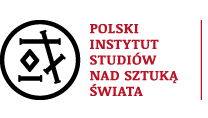CONTRIBUTE
TEXT PREPARATION RULES:
The size of your contribution, it should be within reasonable limits of 10 pages (c. 18.000 letters with spaces, including footnotes and bibliography) and 5 plates (or illustrations). Scanned illustrations should be of high resolution of 300 DPI. If you think you would require more text or illustrations, please consult it with us.
The publication of all photographs of artworks and documentation housed in libraries, museums or private collections requires a written permission of their legal owners for the Polish Institute of World Art.
The organizers reserve the right to send back the article to its author with a request for some revisions and completion, as well as to decline publication of any article, which does not meet substantive requirements or its content matter departs from the subject of the Conference and published post-conference volume.
We kindly ask you to follow certain guidelines, which will both facilitate editorial work and help preserve a uniform character of the volume:
1. Italics.
Please kindly apply italics to the following:
- all quotations from foreign languages as well as single foreign terms,
- titles of art and literary works, titles of books, but not the titles of articles.
- stressed words
No italics. Please use normal (Roman) style in case of quotations in Polish with quotation marks.
Please, use diacritical marks when appropriate.
2. Footnotes:
Footnotes are to be placed at the bottom of each page (no endnotes).
Footnote marks – superscript numbers – are to be placed after full stops or immediately after personal or geographic names or other word inside the sentence:
Example:
Yung Wing1 conceived that “through Western education China might be regenerated, become enlightened and powerful.”2
We use common editorial abbreviations. Publication place or date put into square brackets means that the information has been established by the author.
Please, do not use such bibliographic references as ibid., op. cit. etc. in footnotes.
A bibliography should be placed at the end of the text. It should include only the works explicitly quoted or referred to in the article.
Bibliographic references in footnotes should have the unified form as in the example:
a. Books:
Reference in the footnote:
Yatim (2006: 12–24)
Corresponds to the bibliographic entry:
Yatim 2006 = Yatim, Othman Mohd: Batu Aceh. Early Islamic gravestones in Penisular Malaysia, Museum Association of Malaysia, Kuala Lumpur 2006.
b. Articles
Reference in the footnote:
Ginter (2005: 138–145)
Corresponds to the bibliographic entry:
Ginter (2005) = Ginter, Magdalena: “Motywy literackie w miniaturach perskich ze zbiorów polskich”, Torunskie Studia o Sztuce Orientu, 2 (2005): 143–154
In general, we do not capitalize letters in English titles.
Titles in languages other than Polish or Russian (including Oriental and other Eastern European languages) should be translated into Polish or Russian and be placed within square brackets.
c. Collective volumes (with an editor):
Reference in the footnote:
Malinowski 2008
Corresponds to the bibliographic entry:
Malinowski 2008 = Malinowski, Jerzy (red.): Sztuka Dalekiego Wschodu. Studia, Neriton, Warszawa 2008
d. Journals
Reference in the footnote:
Paszkiewicz (1998: 75)
Corresponds to the bibliographic entry:
Paszkiewicz (1998) = Paszkiewicz, Piotr: „Rosyjskie budownictwo cerkiewne w Cesarstwie Wschodzącego Słońca i jego kontekst polityczny 1859-1917 (zarys problematyki)”, Biuletyn Historii Sztuki, 1-2 (1998):75.
e. Exhibition catalogs:
Reference in the footnote:
Kształcenie 1996 = Kształcenie artystyczne w Wilnie i jego tradycje – Vilniaus meno mokykla ir jos tradicijos – Fine art education in Vilnius and its tradition, Jerzy Malinowski, Michał Woźniak, Rūta Janonienė (red.), katalog wystawy., Muzeum Okręgowe w Toruniu, Uniwersytet Mikołaja Kopernika, Vilniaus dailės akademija, Toruń 1996
Publication place should be preceded by the name of publisher or publishing institution (e.g. museum). We do not give the dates of the exhibition in question.
If the book or catalog was published in two or more languages, we give all titles, separating them by dash.
f. Source references:
We write the name of archives or library (in parenthesis we put the original name in Latin transcription and – if need be – its abbreviation), city, signature of archival file, the title of the source, its date and folio (page) number, marking it “r.” (recto) or “v.” verso) if required.
When the archives name is cited more than once, write out both the full version and the abbreviation at first occurrence.
3. Bibliography:
A bibliography should be placed at the end of the text. It should include only the works explicitly quoted or referred to in the article.
Examples:
Kształcenie 1996 = Kształcenie artystyczne w Wilnie i jego tradycje – Vilniaus meno mokykla ir jos tradicijos – Fine art education in Vilnius and its tradition, Jerzy Malinowski, Michał Woźniak, Rūta Janonienė (red.), katalog wystawy Muzeum Okręgowe w Toruniu, Uniwersytet Mikołaja Kopernika, Vilniaus dailės akademija, Toruń 1996.
Malinowski 2003 = Malinowski, Jerzy: Malarstwo polskie XIX wieku, Wydawnictwо DiG,
Warszawa 2003.
Paszkiewicz 1998 = Paszkiewicz, Piotr: „Rosyjskie budownictwo cerkiewne w Cesarstwie Wschodzącego Słońca i jego kontekst polityczny 1859-1917 (zarys problematyki), Biuletyn Historii Sztuki, 1-2 (1998):75.
Александр Шевченко 2010 = Александр Шевченко. Живопись. Графика, Т. М. Левина (red.), каталог выставки, Государственная Третьяковская галерея, Арт-бюро «Классика», Москва 2010.
Коваленко, Никольская 2008 = Коваленко, Г[ригорий] Ф., Никольская И[рина]. И. (red.): Польское искусство и литература. От симболизма к авангарду, Алетейя, Санкт Петербург 2008.
Рабинович 2000 = Рабинович, В[адим]. Л.: „Всегда – на первой странице” [w:] Русский авангард 1910-1920-х годов в европейском контексте, Г. Ф. Коваленко (ред.), Наука, Москва 2000: 43-48.
Свирида 1999 = Свирида, И[несса] И.: Межлу Петербургом, Варшавой а Вильно. Художник в культурном пространстве. XVIII – середина XIX вв. Очерки, ОГИ, Москва 1999: 198-211.



